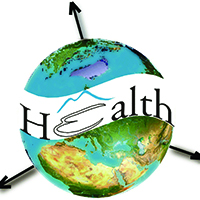There is more to satellite imagery than meets the eye

Published: 31 May 2022
Abstract Views: 2095
PDF: 400
HTML: 19
HTML: 19
Publisher's note
All claims expressed in this article are solely those of the authors and do not necessarily represent those of their affiliated organizations, or those of the publisher, the editors and the reviewers. Any product that may be evaluated in this article or claim that may be made by its manufacturer is not guaranteed or endorsed by the publisher.
All claims expressed in this article are solely those of the authors and do not necessarily represent those of their affiliated organizations, or those of the publisher, the editors and the reviewers. Any product that may be evaluated in this article or claim that may be made by its manufacturer is not guaranteed or endorsed by the publisher.
Similar Articles
- Amalia Mendes, Ari Whiteman, Benjamin Nygren, Brian Kaplan, Imtiaz Hussain, Sajid Soofi, Maureen Martinez, Noha H. Farag, Immunity to poliovirus in Afghanistan: A household sampling method for serological assessment based on geographical information systems , Geospatial Health: Vol. 17 No. 2 (2022)
- Manuel O. Espinosa, Francisco Polop, Camilo H. Rotela, Marcelo Abril, Carlos M. Scavuzzo, Spatial pattern evolution of Aedes aegypti breeding sites in an Argentinean city without a dengue vector control programme , Geospatial Health: Vol. 11 No. 3 (2016)
- Rufin K. Assaré, Ying-Si Lai, Ahoua Yapi, Yves-Nathan T. Tian-Bi, Mamadou Ouattara, Patrick K. Yao, Stefanie Knopp, Penelope Vounatsou, Jürg Utzinger, Eliézer K. N'Goran, The spatial distribution of Schistosoma mansoni infection in four regions of western Côte d'Ivoire , Geospatial Health: Vol. 10 No. 1 (2015)
- Yves M. Tourre, Mireille Paulin, Gilles Dhonneur, David Attias, Atul Pathak, COVID-19, air quality and space monitoring , Geospatial Health: Vol. 17 No. s1 (2022): Special issue on COVID-19
- Veerasak Punyapornwithaya, Chalutwan Sansamur, Arisara Charoenpanyanet, Epidemiological characteristics and determination of spatio-temporal clusters during the 2013 dengue outbreak in Chiang Mai, Thailand , Geospatial Health: Vol. 15 No. 2 (2020)
- Gilbert Nduwayezu, Pengxiang Zhao, Clarisse Kagoyire, Lina Eklund, Jean Pierre Bizimana, Petter Pilesjo, Ali Mansourian, Understanding the spatial non-stationarity in the relationships between malaria incidence and environmental risk factors using Geographically Weighted Random Forest: A case study in Rwanda , Geospatial Health: Vol. 18 No. 1 (2023)
- Joseph Leedale, Anne E. Jones, Cyril Caminade, Andrew P. Morse, A dynamic, climate-driven model of Rift Valley fever , Geospatial Health: Vol. 11 No. s1 (2016): HEALTHY FUTURES
- Amornrat Luenam, Nattapong Puttanapong , Spatial association between COVID-19 incidence rate and nighttime light index , Geospatial Health: Vol. 17 No. s1 (2022): Special issue on COVID-19
- Susan Maroney, MaryJane McCool-Eye, Andrew Fox, Christopher Burdett, Using object-based image analysis to map commercial poultry operations from high resolution imagery to support animal health outbreaks and events , Geospatial Health: Vol. 15 No. 2 (2020)
- Behzad Kiani, Colleen Lau, Robert Bergquist, From Snow’s map of cholera transmission to dynamic catchment boundary delineation: current front lines in spatial analysis , Geospatial Health: Vol. 18 No. 2 (2023)
<< < 1 2 3 4 5 6 7 8 9 10 > >>
You may also start an advanced similarity search for this article.

 https://doi.org/10.4081/gh.2022.1106
https://doi.org/10.4081/gh.2022.1106





